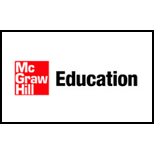
Concept explainers
Introduction:
Traditional Costing System: A cost accounting system records the production activities using a perpetual inventory system. Traditional costing allocates factory overhead to products based on the volume of production and resources utilised. Factory/manufacturing
Activity Based Costing System: Activity based costing as a method of costing was introduced to overcome the limitations of traditional costing system. Allocation and absorption of factory overheads using common parameters such as labour/machine hours result in inconsistencies. A manufacturing process is divided into various batches and activities. Not all the batches or stages of production are uniform. Different batches require different amount of human efforts or machine hours. Hence, activity based costing aims in identifying activities or production processes for producing a product. The individual activities are combined together with similar processes to form a cost pool. The pool is then analysed and assigned at a predetermined overhead rate that will be assigned to individual jobs and products.
(1)
To compute:
Unit product costs using the traditional costing system.
(2)
To compute:
Unit product costs using the activity-based absorption costing system.
(3)
To ascertain:
Reason for differences in product costs between the two systems.
Want to see the full answer?
Check out a sample textbook solution
Chapter 3 Solutions
Connect 1-Semester Access Card for Managerial Accounting
- Critically analyse the role of financial reporting in investment decision-making,emphasizing the qualitative characteristics that enhance the usefulness of financialstatements. Discuss how financial reporting influences both investor confidence andregulatory decisions, using relevant examples.arrow_forwardHelp need!!arrow_forwardAnswer please correarrow_forward
- Answer should be coarrow_forwardSolve quiarrow_forwardAssess the role of modern accounting theories in guiding research in accounting.Discuss how contemporary theories, such as stakeholder theory, legitimacy theory, andbehavioral accounting theory, shape research questions, hypotheses formulation, andempirical analysis.arrow_forward
- Need answerarrow_forwardDefine research methodology in the context of accounting theory and discuss theimportance of selecting appropriate research methodology. Evaluate the strengths andlimitations of quantitative and qualitative approaches in accounting research.arrow_forwardCritically evaluate the progress and challenges in achieving a single set of globalaccounting standards. Discuss the benefits and drawbacks of globalization inaccounting, providing relevant examples.arrow_forward

 AccountingAccountingISBN:9781337272094Author:WARREN, Carl S., Reeve, James M., Duchac, Jonathan E.Publisher:Cengage Learning,
AccountingAccountingISBN:9781337272094Author:WARREN, Carl S., Reeve, James M., Duchac, Jonathan E.Publisher:Cengage Learning, Accounting Information SystemsAccountingISBN:9781337619202Author:Hall, James A.Publisher:Cengage Learning,
Accounting Information SystemsAccountingISBN:9781337619202Author:Hall, James A.Publisher:Cengage Learning, Horngren's Cost Accounting: A Managerial Emphasis...AccountingISBN:9780134475585Author:Srikant M. Datar, Madhav V. RajanPublisher:PEARSON
Horngren's Cost Accounting: A Managerial Emphasis...AccountingISBN:9780134475585Author:Srikant M. Datar, Madhav V. RajanPublisher:PEARSON Intermediate AccountingAccountingISBN:9781259722660Author:J. David Spiceland, Mark W. Nelson, Wayne M ThomasPublisher:McGraw-Hill Education
Intermediate AccountingAccountingISBN:9781259722660Author:J. David Spiceland, Mark W. Nelson, Wayne M ThomasPublisher:McGraw-Hill Education Financial and Managerial AccountingAccountingISBN:9781259726705Author:John J Wild, Ken W. Shaw, Barbara Chiappetta Fundamental Accounting PrinciplesPublisher:McGraw-Hill Education
Financial and Managerial AccountingAccountingISBN:9781259726705Author:John J Wild, Ken W. Shaw, Barbara Chiappetta Fundamental Accounting PrinciplesPublisher:McGraw-Hill Education





